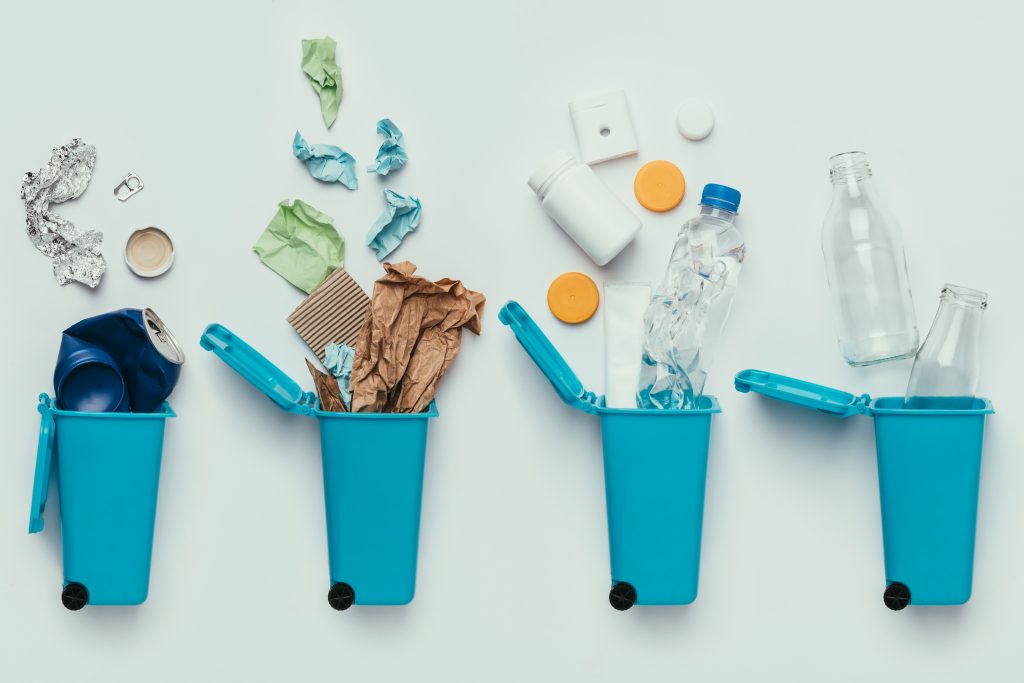Defining What is Recyclable in America
Ah, the question we’ve all asked at least once while staring over the recycling bin: “Is [Product X] recyclable?” If only it were a yes-or-no question.
The latest effort to define recyclability came in July 2018, when The Association of Plastic Recyclers released a set of four conditions that would determine if plastics are considered recyclable. Plastics is one industry that needs to provide clarity about what products are recyclable, as there are seven resinsand hundreds of forms (from bottles to laundry baskets to utensils).
In an earlier effort to clarify what was recyclable, the Federal Trade Commission’s Green Guidesreleased in the 1990s guidelines that imposed fines on companies that falsely represented their products as “recyclable.” And let’s not forget the How2Recycle label introduced in 2008 as a way of labeling products and their components “recyclable” or not on a pass/fail level.
ll of these efforts mean well, but they miss the boat on helping consumers be good recyclers. The question we should be answering is not “Is [Product X] recyclable?” What we really need to know is, “Can I recycle this product in my community?” Local rules vary so much that national guidance cannot impose order, creating widespread confusion that has been amplified by the recent Chinese ban on contaminated recyclables imports.
Access to Recycling Programs Is Key
Take the case of glass bottles. It’s likely that most Americans assume they’re recyclable since glass is one of the big five commonly recycled materials.
In Montana, the fourth largest U.S. state by area, the glass recycling market is basically nonexistent. It’s not that residents aren’t interested, they just don’t have access to glass recycling programs. In fact, in 2010, when Target became the first retailer to offer in-store recycling bins for glass bottle in the state, the Montana Target stores were so inundated with glass that they had to replace their front-of-store bins with larger 20-yard roll-off boxes.
Target’s glass recycling program lost so much money through transporting bottles to Utah that the company discontinued its recycling program in Montana in 2016. So, is glass recyclable? You might not think so if you live in Montana or one of the numerous large communities (for example, Kansas City or New Orleans) where you can’t recycle glass through curbside recycling programs.
Market Demand for Recycled Materials
For local recycling programs to succeed, they must have viable markets for the materials they collect. Unfortunately, earlier this year, the U.S. lost a substantial recycling market in China because the materials we were exporting were contaminated, or badly sorted. But why was material going to China in the first place?
The Institute of Scrap Recycling Industries (ISRI) estimates that recycling in the U.S. was worth $106 billion in 2015. However, materials only sell if manufacturers use recycled content in their products.
The average aluminum can contains 70 percent recycled content. For plastic bottles, it’s less than 10 percent. Limited demand for recycled materials creates limited demand for recyclable items, which produces cutbacks at local recycling companies.
So, instead of asking, “Can I recycle [Product X]?” we have to think bigger. Ask what percentage of the products and packaging you buy are made from recycled materials. Companies that use recycled materials will absolutely promote this on their products, and consumers don’t have to wait for legislation to solve the problem. Buying recycled drives demand for recycling.
If enough of us purchase products made from recycled materials, recycling markets will grow to fill the demand. If we don’t make the effort, we can expect to see some stingy curbside recycling programs. Be part of the solution by shopping with an eye to recycled content in the products you buy. Send the monetary signal that you want more recycling and less landfill and waste exporting.

